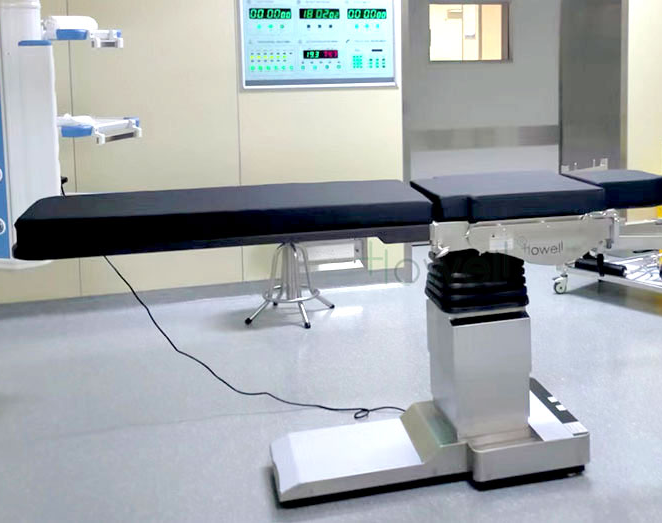Interventional therapy refers to a minimally invasive treatment method that utilizes advanced technology. It involves the insertion of specialized instruments, such as catheters and guide wires, into the body under the guidance of medical imaging equipment. This technique allows for both diagnosis and localized treatment of internal diseases.
By utilizing digital technology, interventional therapy expands the doctor's visual field and extends their reach through the use of catheters and guide wires. The incision made during this procedure is incredibly small, comparable to the size of a grain of rice. Interventional therapy is particularly beneficial for conditions that traditionally required surgery or had limited treatment options, including tumors, hemangiomas, and various types of hemorrhages.
One notable development in this field is an innovative operating bed designed specifically for interventional surgery by Howell Medical. This bed offers several advantageous features: Firstly, it ensures that there are no metal frame shadows on catheter beds when X-ray tubes are angled obliquely during imaging procedures. Additionally, there is no risk of collision between the catheter bed and imaging machines even at significant oblique angles.
Secondly, this operating bed includes a comfortable mattress suitable for extended periods of lying down without causing fatigue.
Lastly, it serves as an ideal platform for performing catheter surgeries while allowing patients to undergo X-ray fluoroscopy and photography simultaneously.
Thirdly, there is an operational bed designed specifically for catheter surgery, capable of accommodating patients undergoing X-ray fluoroscopy and photography.
Fourthly, this bed allows smooth movement in all directions - back and forth, up and down, as well as left and right - to cater to diverse surgical requirements.
Fifthly, the
interventional operating bed incorporates a carbon fiber panel to seamlessly integrate with C-arm imaging systems. This panel possesses exceptional permeability, remarkable toughness, lightweight properties while ensuring clear imaging of various body parts.
It finds extensive application in hospitals at every level for angiography, catheter intervention procedures, radiological diagnosis purposes along with orthopedics and tumor surgeries among others.
Interventional surgery significantly differs from traditional surgical methods where operations are typically conducted within an operating room through localized excision or transplantation. In contrast, interventional treatments are usually performed in specialized catheter rooms employing minimally invasive techniques involving small incisions on the skin coupled with angiography or CT magnetic imaging devices for both vascular and non-vascular treatments.
The concept of interventional surgery varies across different medical systems and diseases; it represents a relatively recent treatment approach that gained prominence since the 1980s as an alternative plan encompassing both medical care and surgical interventions.
This method offers several advantages such as minimal trauma inflicted upon patients during procedures resulting in swift effects alongside high treatment efficacy levels leading to satisfactory outcomes. Consequently making it a promising direction for future advancements in medicine.
